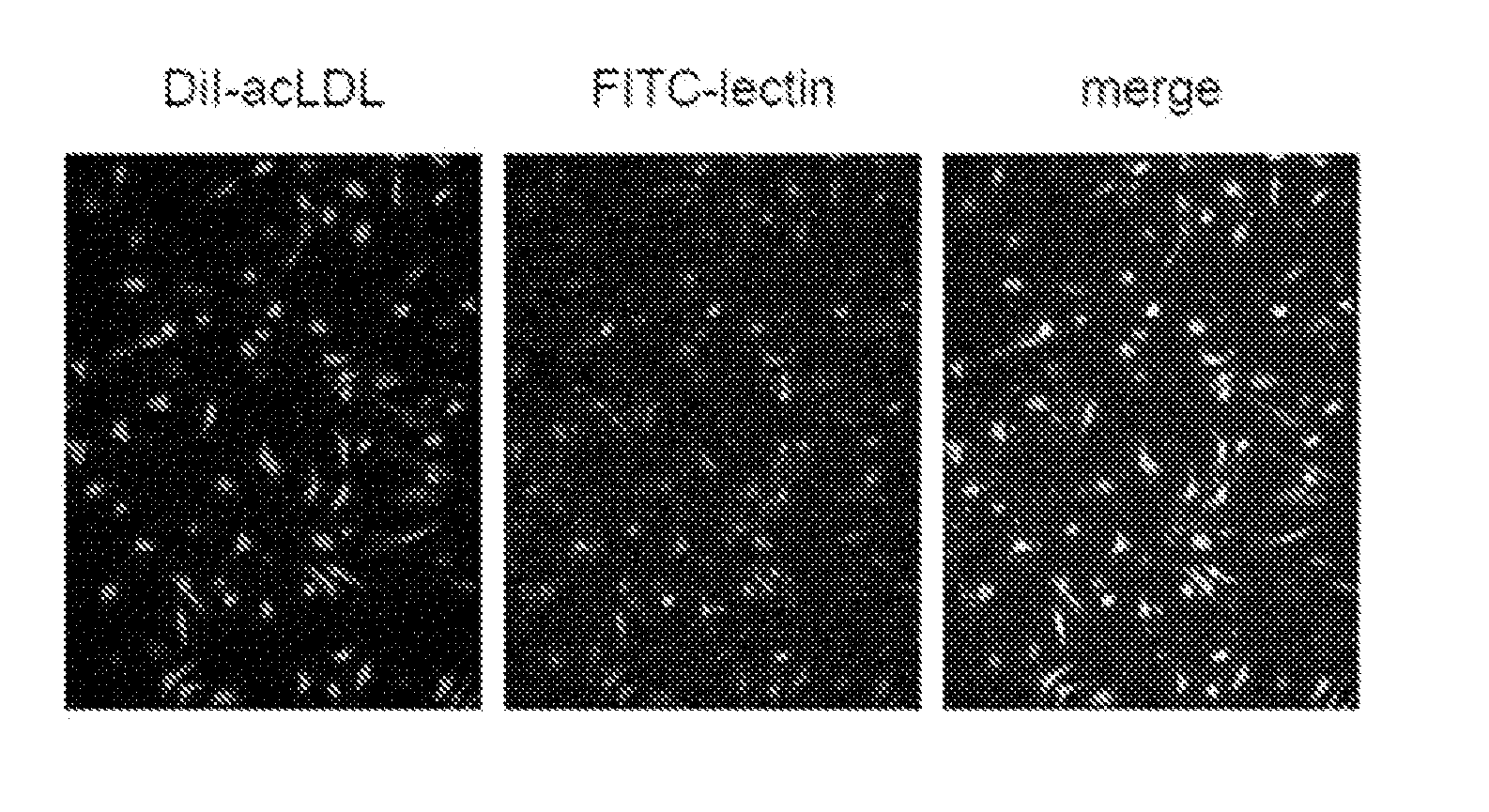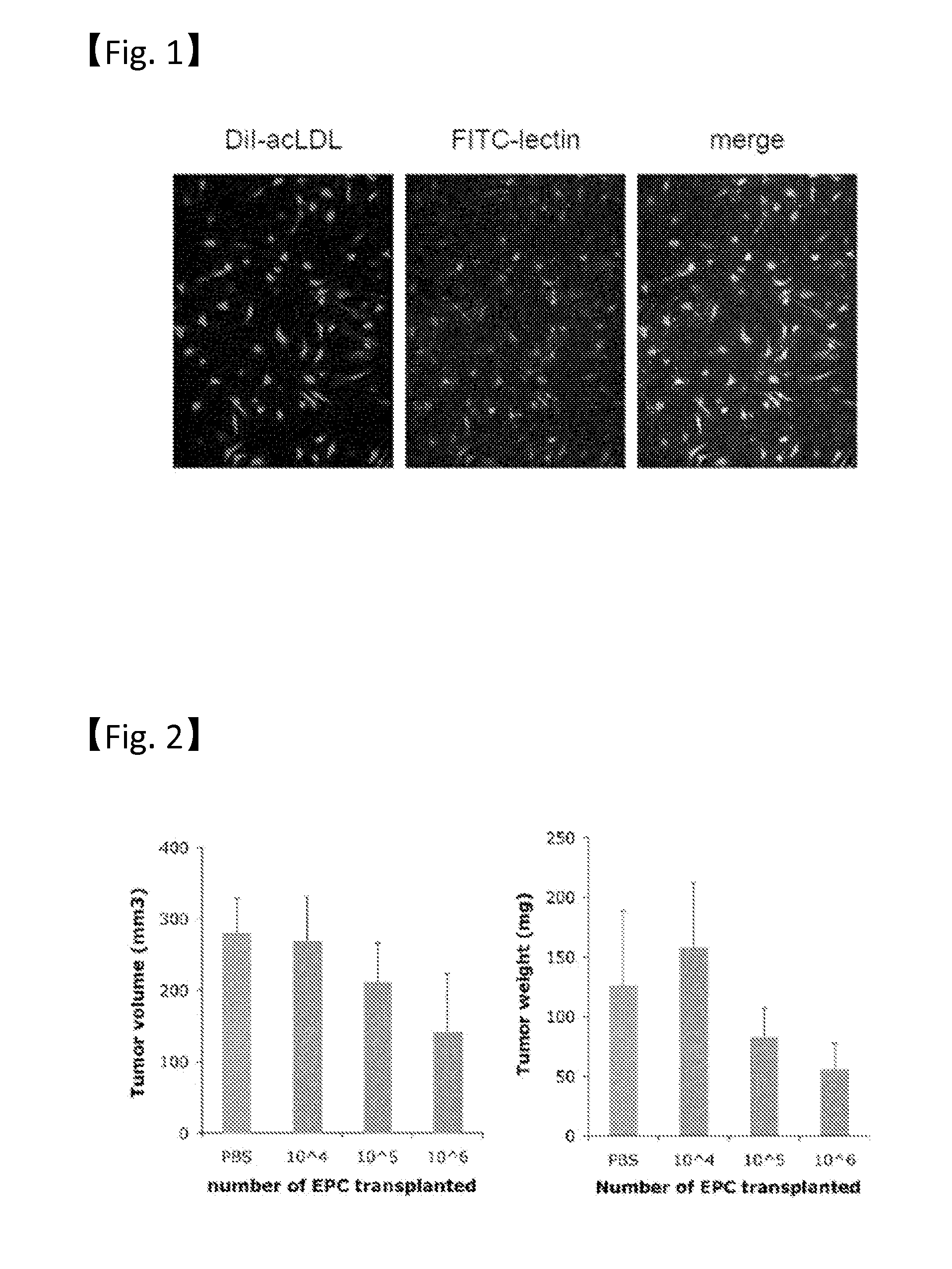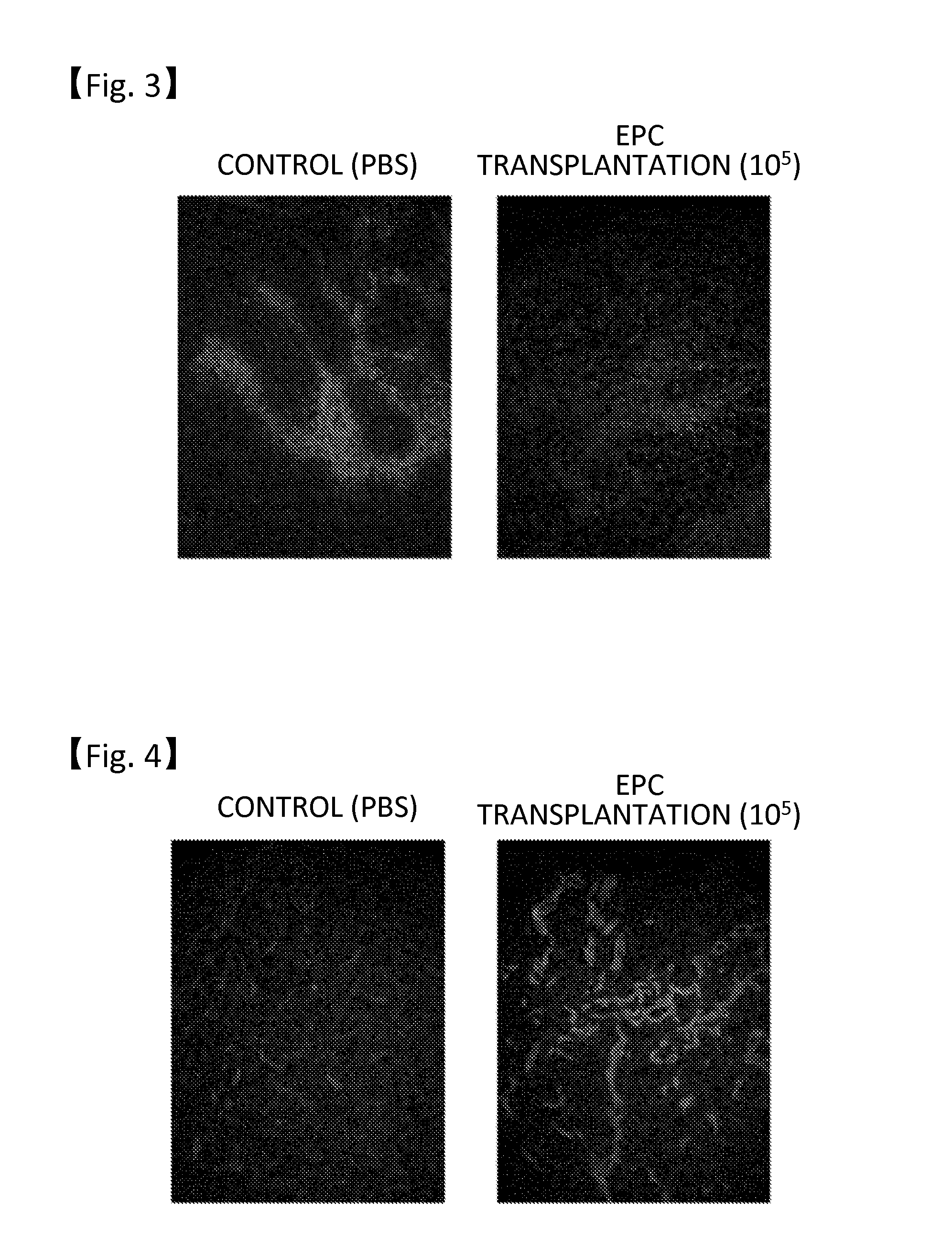Anticancer therapy by transplanting vascular endothelial progenitor cells
a technology of endothelial progenitor cells and anticancer therapy, which is applied in the direction of biocide, unknown materials, drug compositions, etc., can solve the problems of insufficient therapeutic effects, radiation or the like dose, and the use of immortalized cells in cancer treatment raises serious concerns, so as to reduce or withdraw the hypoxic region(s) in the tumor, induce cancer regression, and reduce the effect of tumor hypoxic region
- Summary
- Abstract
- Description
- Claims
- Application Information
AI Technical Summary
Benefits of technology
Problems solved by technology
Method used
Image
Examples
example 1
[0027]Endothelial progenitor cells were separated and prepared from bone marrow as follows: mouse thigh bones or the like were disrupted using a mortar and DPBSE (PBS containing EDTA at a concentration of 5 mM) to collect a bone marrow fluid. From the collected bone marrow fluid, cells were collected according to a standard method. The obtained cells were filtered through a membrane filter of 70 μm in diameter, and the collected cells were suspended in 10 ml of DPBSE. This suspension was gently layered in a 15-ml centrifuge tube containing 4 ml of Histopaque 1083 (Sigma-Aldrich, Inc.). This mixture was used in density gradient centrifugation (400 g, 20 min., room temperature). Then, cells layered in between were collected using a pipette, and bone marrow mononuclear cells (BM-MNC) were isolated therefrom. The isolated cells were cultured for 4 days using a medium EGM-2-MV for microvascular endothelial cells (Clontech) on a plate coated with rat vitronectin (Sigma-Aldrich, Inc.) to o...
example 2
[0028]The mouse endothelial progenitor cells prepared in Example 1 were transvenously administered in the range of 1×104 to 1×106 cells to cancer-bearing nude mice having a hypodermically transplanted human pancreatic cancer cell strain KP-1N (JCRB0177.0). The results of measuring the tumor volumes (mm3) and weights of pancreatic cancer for 2 to 4 weeks are shown in FIG. 2 for the individuals (n=10) that received the transplantation of the endothelial progenitor cells at each concentration. Individuals that received the transvenous administration of PBS in the same way as above were used as controls. In this context, the measurement of the tumor volumes (mm3) of pancreatic cancer was performed according to a method described in the document (Mizukami Y, et al., Nat Med 11, 992-997, 2005). As a result, tumor growth inhibition was confirmed in the individuals that received the transplantation of 1×105 or more endothelial progenitor cells, in the 2- to 4-week observation period. Moreov...
example 3
[0029]The mouse endothelial progenitor cells were transvenously administered in the range of 1×104 to 1×106 cells to cancer-bearing nude mice having a hypodermically transplanted human pancreatic cancer cell strain KP-1N (JCRB0177.0). 90 minutes before slaughter, pimonidazole hydrochloride (Hypoxyprobe-1; Chemicon) generally used as a hypoxia marker was intraperitoneally administered at a dose of 60 mg / kg to the mice. The tumor was immunohistologically stained with anti-Hypoxyprobe-1 antibodies. The immunohistological staining results (n=10) are shown in FIG. 3, which were obtained by transvenously administering the mouse endothelial progenitor cells at a dose of 1×105 cells and by transvenously administering PBS as a control. A staining-positive region was evaluated as a low-oxygen region. Reduction of a hypoxic region(s) in the tumor was confirmed in the individuals that received the transplantation of 1×105 or more endothelial progenitor cells, in the 2- to 4-week observation per...
PUM
 Login to View More
Login to View More Abstract
Description
Claims
Application Information
 Login to View More
Login to View More - R&D
- Intellectual Property
- Life Sciences
- Materials
- Tech Scout
- Unparalleled Data Quality
- Higher Quality Content
- 60% Fewer Hallucinations
Browse by: Latest US Patents, China's latest patents, Technical Efficacy Thesaurus, Application Domain, Technology Topic, Popular Technical Reports.
© 2025 PatSnap. All rights reserved.Legal|Privacy policy|Modern Slavery Act Transparency Statement|Sitemap|About US| Contact US: help@patsnap.com



